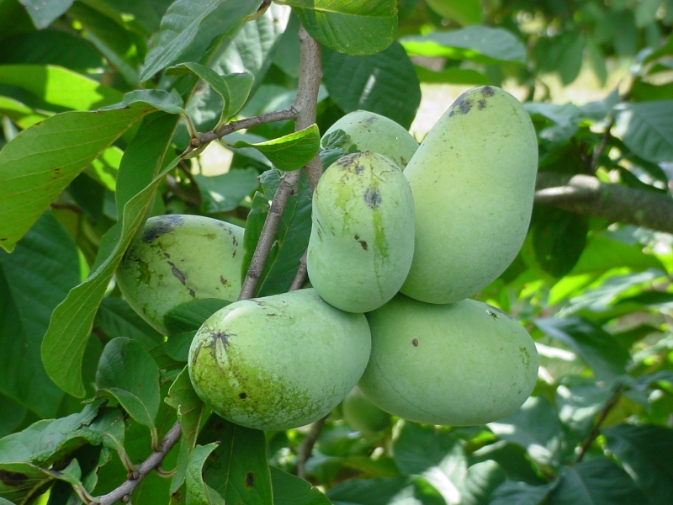
Coltivazione e Vendita di Asimina Triloba a Bergamo Agrierre
Asimina triloba, commonly called pawpaw, is a Missouri native small understory tree or large shrub which typically grows 15-20' tall (sometimes to 30') and occurs in low bottom woods, wooded slopes, ravines and along streams. Often spreads by root suckers to form colonies or thickets.
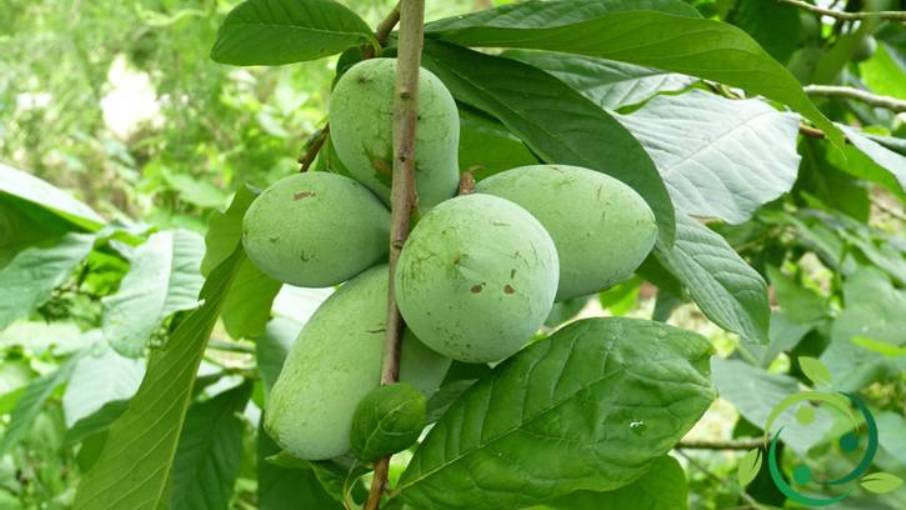
Come coltivare l’Asimina triloba tecnica ed utili
With leaves and branches that deer avoid, and fruit that is loved by all, the pawpaw ( Asimina triloba) is a fascinating native tree. It's the only local member of a large, mainly-tropical plant family (Annonaceae), and produces the largest edible fruit native to North America.
Come Coltivare l'Asimina triloba (Banano di Montagna)? Com'è il Sapore
Pawpaw ( Asimina triloba ), also known as papaw, Indiana banana, Hoosier banana, Michigan banana, and poor man's banana, is the only temperate member of the tropical Annonaceae family (custard apple family) and is the largest edible tree fruit native to the United States.
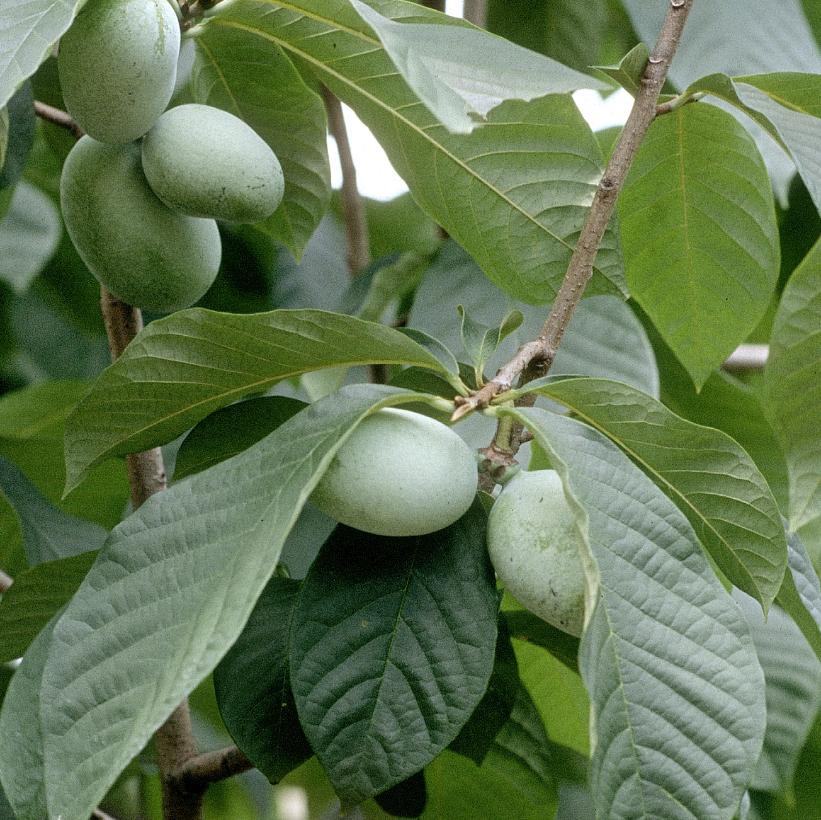
Asimina triloba from NVK Nurseries
Pollination self-sterile (monoecious) pH 5.6 - 7.3 Yield 3 - 4 years (clone), 5 - 7 years (seedling) Tolerant shade Native Range and Climate Pawpaws (Asimina triloba) are native to the United States, east of the prairies, and are generally found in the humid subtropical (Cfa) and hot-summer continental (Dfa) climate.
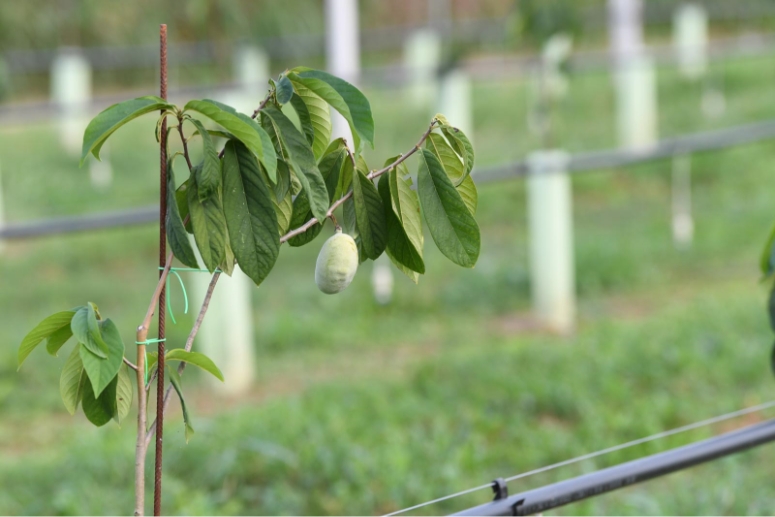
Coltivazione e Vendita di Asimina Triloba a Bergamo Agrierre
Fruit shape variable, rounded, ellipsoid to oblong, 5-12 cm long, greenish yellow, finally brown, edible, banana-pear flavored with a consistency of custard; contains 2-3 brown, flattened seeds, each 2-2.5 cm long. Sun or shade, best in moist, fertile, deep, slightly acidic soil. Hardy to USDA Zone 5 The most cold hardy of the Asimina species.

Coltivazione e Vendita di Asimina Triloba a Bergamo Agrierre
Per impiantare l'Asimina triloba è opportuno farlo nel periodo autunnale, tramite propaggine o talee, quest'ultime messe a radicare nel periodo invernale (per l'innesto si consiglia quello a spacco).

Asimina triloba at OBG 2015.jpg Rotary Botanical Gardens
Asimina triloba (L.) Dunal, commonly known as pawpaw or "poor man's banana", is the only member of the Annonaceae family growing in temperate zones and in particular grows wild in the eastern United States, ranging from northern Florida to southern Ontario (Canada) and as far west as eastern Nebraska (Kral, 1960; Layne, 1996).
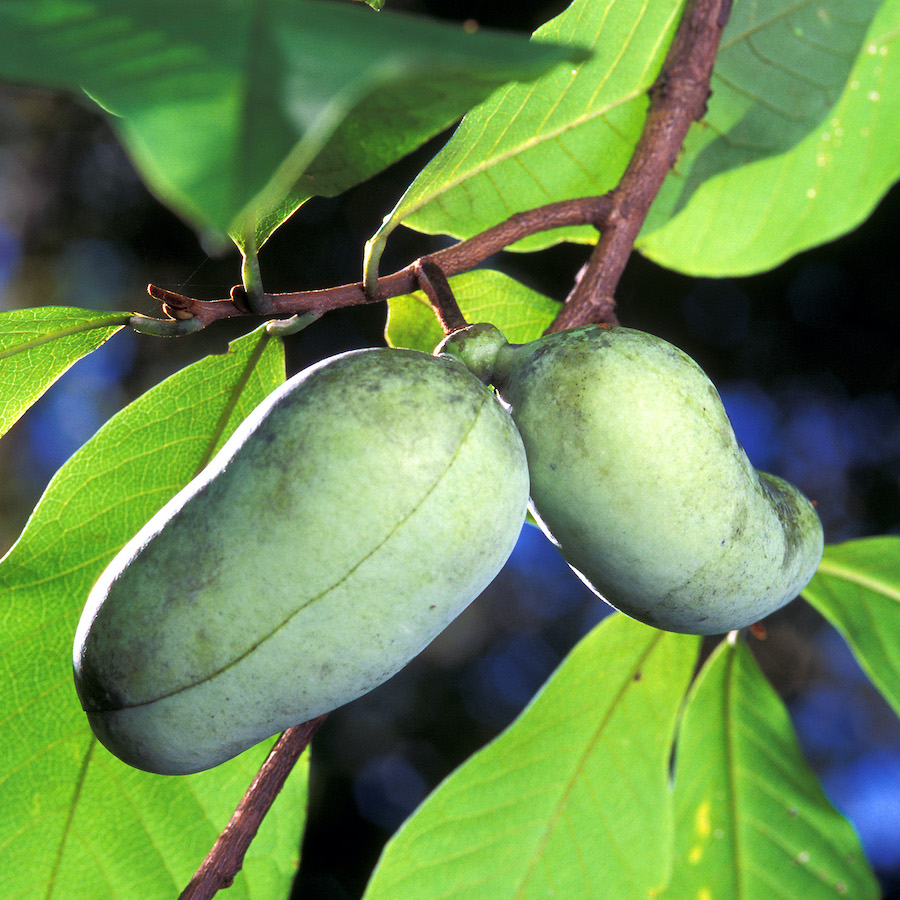
Asimina triloba, Paw Paw Keystone Wildflowers
Asimina triloba Common Name (s): Common Pawpaw Pawpaw Phonetic Spelling ah-SIH-min-ah trih-LO-bah This plant has low severity poison characteristics. See below Description Pawpaw is a deciduous, native, understory tree in the Annonaceae family. Its name is probably a modification of the Spanish papaya.
Come Coltivare l'Asimina triloba (Banano di Montagna)? Com'è il Sapore
Cultivation - For the cultivation of Asimina triloba take into account that it is a plant that resists up to -20 °, so it is a plant that can be successfully cultivated in Italy, although in very dry areas it will have to be watered frequently, especially during the first years.

Asimina triloba Alberi da Frutta Varietà banano
Here we go over a few modern cultivars with short bloom -to- ripe fruit windows, the short-season cultivars like Maria's Joy, Allegheny, Prima, Nyomi's Delic.
Come Coltivare l'Asimina triloba (Banano di Montagna)? Com'è il Sapore
Per la coltivazione dell'Asimina triloba fattore cruciale è l'impollinazione. I coltivatori di questa pianta da frutto spesso ricorrono all'impollinazione a mano o impiegando degli "attrattori" per gli insetti impollinatori.

Come Coltivare l'Asimina triloba (Banano di Montagna)? Com'è il Sapore
COLTIVAZIONE DELL'ASIMINA TRILOBA. L'Asimina Triloba nonostante preferisca terreni tendenzialmente acidi, essendo molto rustica, riesce a svilupparsi anche su substrati differenti. Sono da preferire nella fase di messa a dimora suoli profondi, piuttosto umidi ma ben drenanti, questo dovuto al fatto che la pianta possiede un apparato.

Asimina triloba Trees and Shrubs Online
Asimina triloba is one of 12 species, all native to North America and is the most Northern and cold hardy species of the family, distributed from Georgia north to Ontario and west to Arkansas and Missouri. It typically appears in moist, well-drained areas along shaded streams, forested lowlands and wooded slopes..
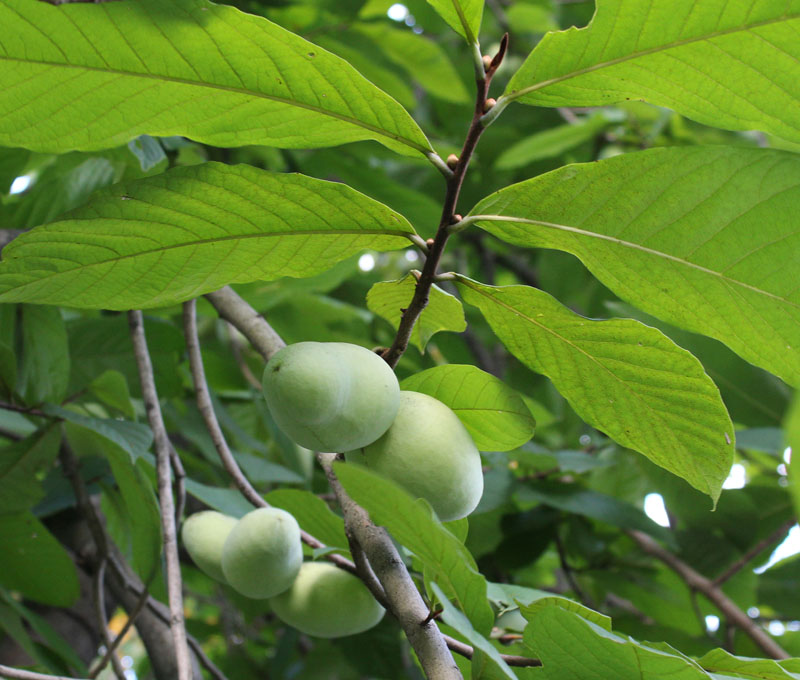
Asimina triloba, Pawpaw at Toadshade Wildflower Farm
Noted for its great foliage effect, Asimina triloba (Pawpaw) is a large, multi-stemmed shrub or small tree with large, slightly drooping, oval, rich green leaves, 6-12 in. long (15-30 cm), turning brilliant yellow to golden hues in fall. Cup-shaped, purple flowers, up to 2 in. across (5 cm), appear in spring before the leaves, and are followed by egg-shaped, edible, greenish yellow fruit, 5 in.

Asimina triloba (Pawpaw), Pawpaw Beech Hollow Farms
Il modo più semplice per mangiare l'Asimina è quello di aprirla con un coltello, incidendo il lato più lungo ed assaporarne la soffice polpa, estraendola con un cucchiaio. Affogati nella polpa troverete i grossi semi, a cui rimane attaccata la polpa.
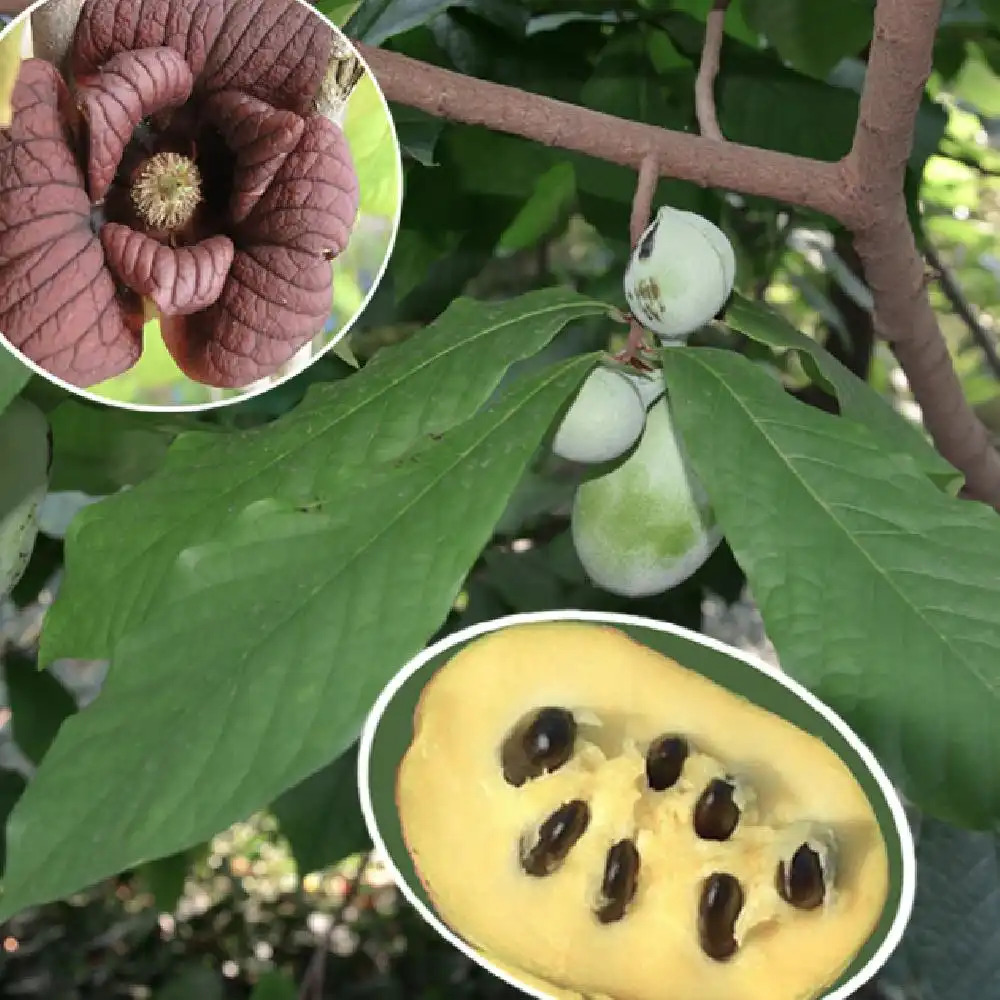
ASIMINA triloba 'Sunflower' Asiminier de Virginie Pawpaw Mangue
Per coltivare bene un'aimina triloba, è indispensabile l'irrigazione, poiché la piantina non resiste a lunghi periodi di siccità, soprattutto se si trova in periodi di caldo intenso. Se non vi sono precipitazioni naturali, bisogna irrigare almeno una volta alla settimana, magari risolvere con un sistema d'irrigazione automatico a goccia.